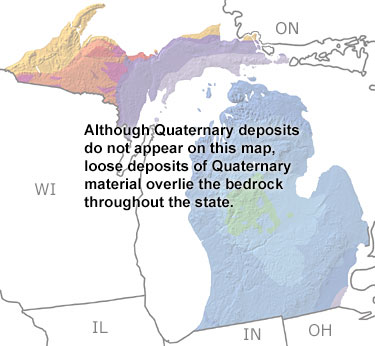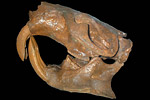Paleontology and geologyThere are abundant Quaternary glacial deposits in Michigan. Glaciers up to a mile thick advanced over Michigan at least four times during the Early Quaternary (Pleistocene), carving out the Great Lakes and sculpting the present-day landscape of lakes, hills, and swamps. In between glacial advances, pine and spruce forests covered the region. Fossils from this time include fresh water clams, snails, fish, amphibians, and birds, as well as mammals such as mammoths, mastodons, musk oxen, and giant beavers. The mastodon was designated Michiganís state fossil because of its abundance. |


